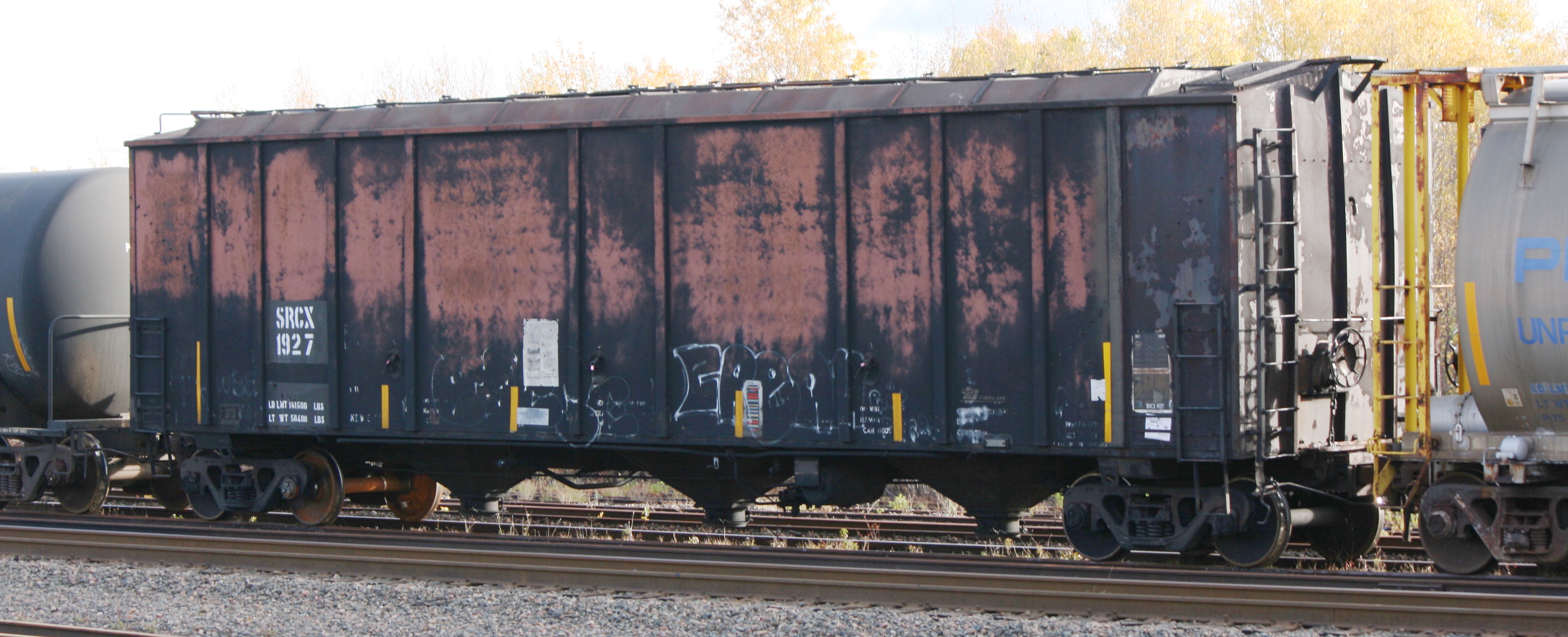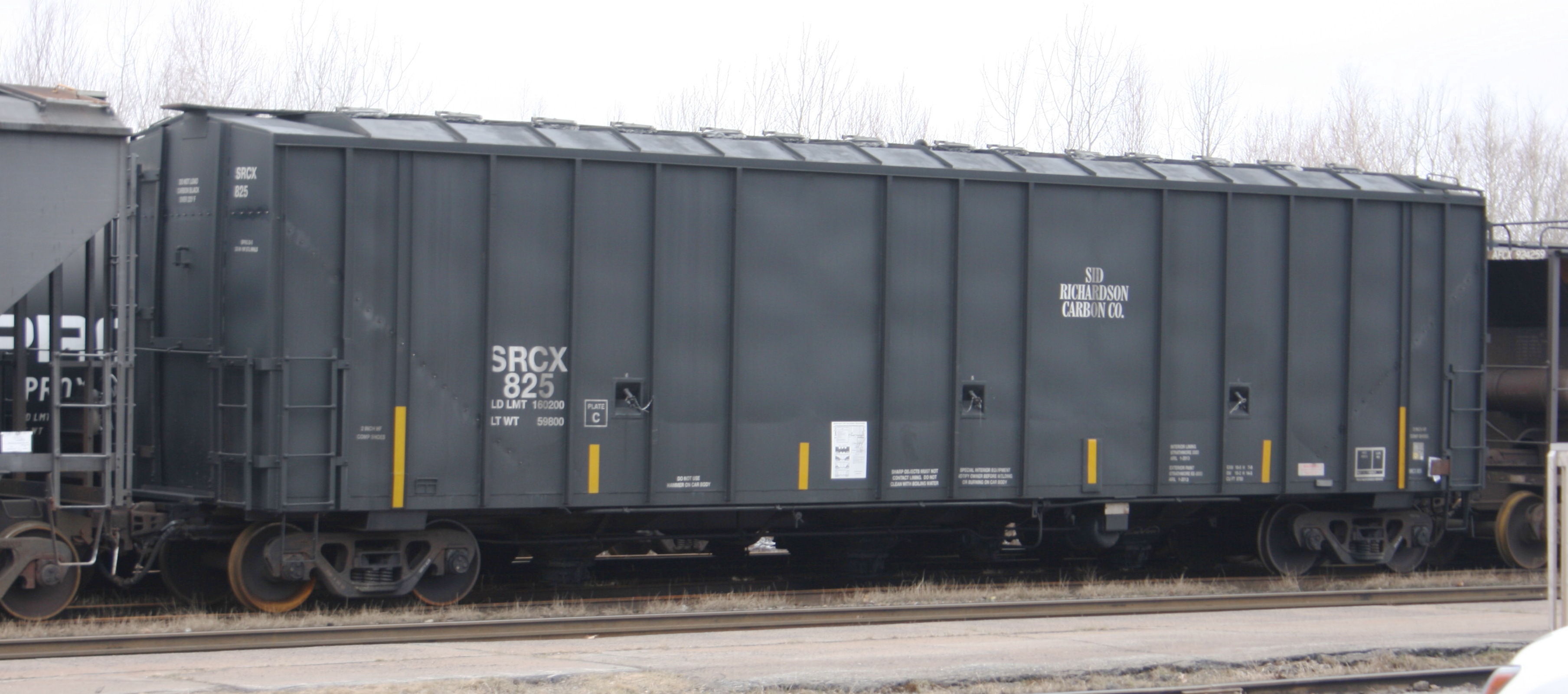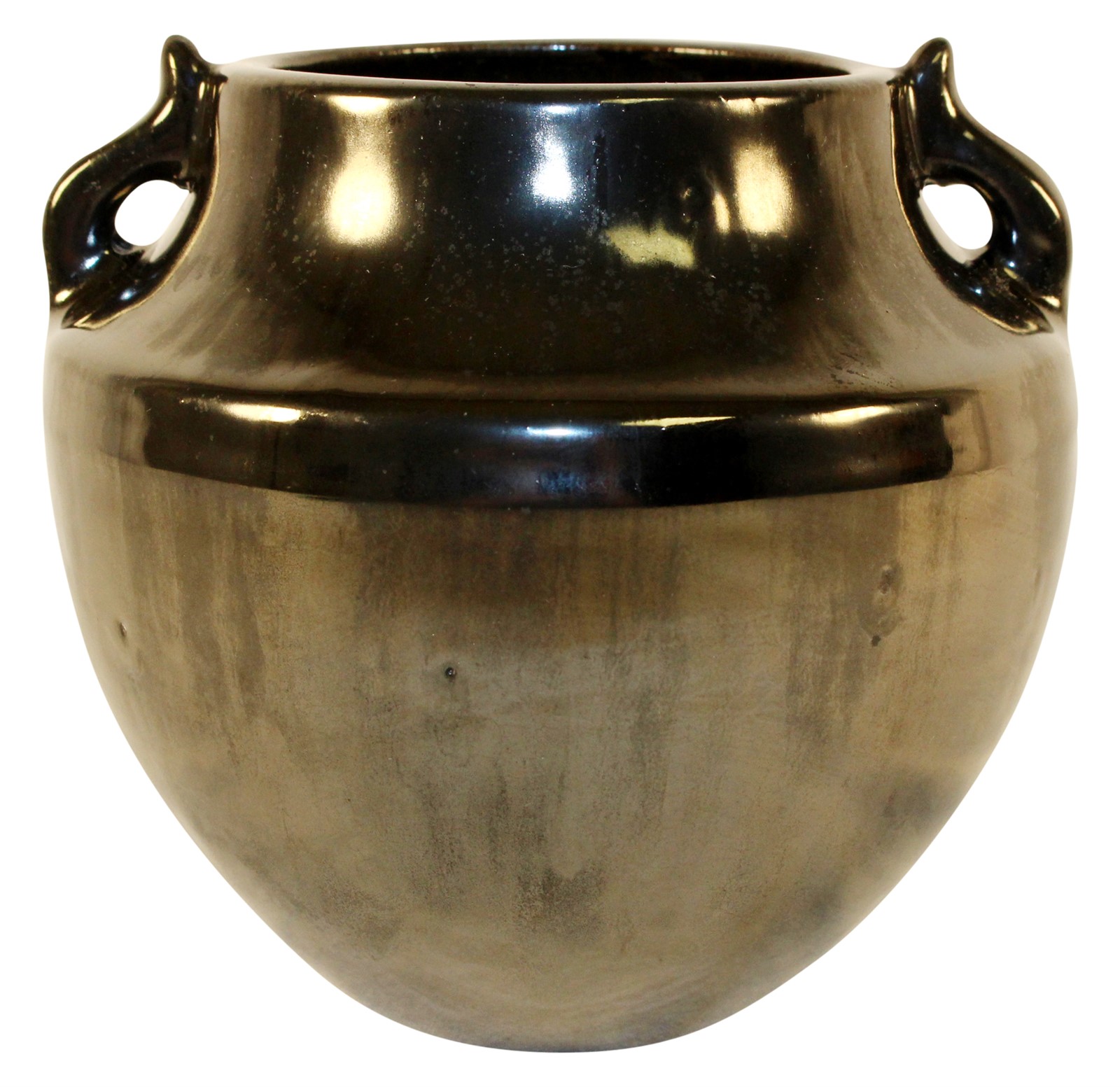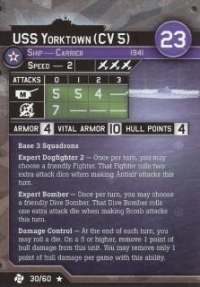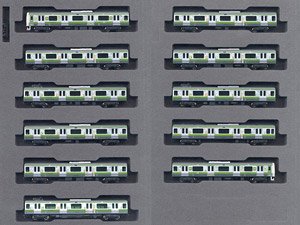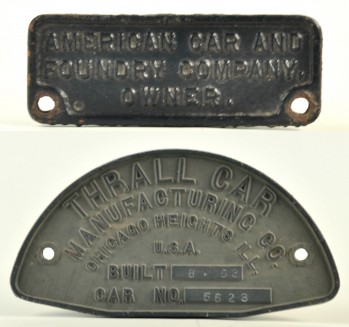History: Found throughout North America, these unique freight cars are commonly found in large groups near major carbon black producers or users. They can also be seen singularly or in small blocks of cars in mixed freight trains. Both prototypes were painstakingly researched from field documentation, photographs, reference books, and builder drawings.
During the 1970s, Thrall Manufacturing Co. introduced a new railcar designed for handling carbon black. These 3-bay, 70-ton capacity covered hopper cars boasted a volume of 5750 cubic feet, and measured 51’ over their ends. Unlike traditional covered hopper designs, where the end slope sheets are plainly visible, these cars featured an enclosed, boxy design, which was a necessity due to a special design feature to aid in the unloading of carbon black.
At the inside ends of the car are special inflatable bags, called “granuflators”. When the car is loaded, they lay flat inside the car. When inflated with pressurized air, the granuflators expand, and push the carbon black towards the outlets. As typical with cars designed to haul carbon black, they featured tight-sealing 16” round roof hatches (22 or 28 depending upon customer specifications), sampling spigots on the car sides, and “butterfly” type outlet gates.
The “1970s” version of the 5750 represents production from approximately 1977 until 1979. This car features ten column-style posts per side and a unique roofline. While the ends are peaked and the end roof panels feature a single slope, the remaining roof panels feature a dual slope and a steep shoulder where it meets the side plate. Many of these cars are still in service today.
During the 1970s, Thrall Manufacturing Co. introduced a new railcar designed for handling carbon black. These 3-bay, 70-ton capacity covered hopper cars boasted a volume of 5750 cubic feet, and measured 51’ over their ends. Unlike traditional covered hopper designs, where the end slope sheets are plainly visible, these cars featured an enclosed, boxy design, which was a necessity due to a special design feature to aid in the unloading of carbon black.
At the inside ends of the car are special inflatable bags, called “granuflators”. When the car is loaded, they lay flat inside the car. When inflated with pressurized air, the granuflators expand, and push the carbon black towards the outlets. As typical with cars designed to haul carbon black, they featured tight-sealing 16” round roof hatches (22 or 28 depending upon customer specifications), sampling spigots on the car sides, and “butterfly” type outlet gates.
The “1970s” version of the 5750 represents production from approximately 1977 until 1979. This car features ten column-style posts per side and a unique roofline. While the ends are peaked and the end roof panels feature a single slope, the remaining roof panels feature a dual slope and a steep shoulder where it meets the side plate. Many of these cars are still in service today.
Railroad/Company: Thrall Car Manufacturing Company was a manufacturer of railroad freight cars in Chicago Heights, Illinois from 1917 to 2001. The company was sold to Trinity Industries in 2001. A.J. Thrall established the Union Wagon Company in 1916, selling used and reconditioned rail car components. This became the Thrall Car Manufacturing Company in 1917. By mid-century, under the leadership of Richard L. Duchossois, the company focused on building specialized freight cars, such as high-cube boxcars for auto parts, all-door boxcars for building products, gondolas, rotary-dump gondolas for coal, bulkhead flatcars and centerbeam flatcars for lumber, double-stack container cars, covered hoppers, autorack cars and single-level trailer cars. In the 1980s, Thrall acquired five competing railcar manufacturers, including autorack builders Whitehead & Kales and Portec, and became the largest such manufacturer of these cars in the United States. In 1984, Duchossois purchased the remaining shares of the company owned by the Thrall family, and the company then operated as part of Duchossois Industries. In the 1990s, Thrall had a production capacity of over 16,000 freight cars per year, with more than 3,000 employees.
From 1997, a European subsidiary Thrall Europa manufactured wagons in York, UK. Thrall Europa, York works closed 2002. In 2000, Thrall Europa acquired the railway vehicle manufacturer ČKD Vagonka Studénka (Czech Republic), renamed Thrall Vagonka Studénka. In 2006 Trinity Industries sold off its European operations to International Railway Systems. The closely held company was sold to Trinity Industries, based in Dallas, Texas, in 2001. The company was subsequently renamed Trinity Rail Group, LLC.
From Wikipedia
From 1997, a European subsidiary Thrall Europa manufactured wagons in York, UK. Thrall Europa, York works closed 2002. In 2000, Thrall Europa acquired the railway vehicle manufacturer ČKD Vagonka Studénka (Czech Republic), renamed Thrall Vagonka Studénka. In 2006 Trinity Industries sold off its European operations to International Railway Systems. The closely held company was sold to Trinity Industries, based in Dallas, Texas, in 2001. The company was subsequently renamed Trinity Rail Group, LLC.
From Wikipedia
Item Links: We found: 1 different collections associated with Rail - Rolling Stock (Freight) - Thrall 5750
- Collection N Scale Model Trains: 36 different items.
Item created by: gdm on 2018-03-13 11:43:10
If you see errors or missing data in this entry, please feel free to log in and edit it. Anyone with a Gmail account can log in instantly.
If you see errors or missing data in this entry, please feel free to log in and edit it. Anyone with a Gmail account can log in instantly.


